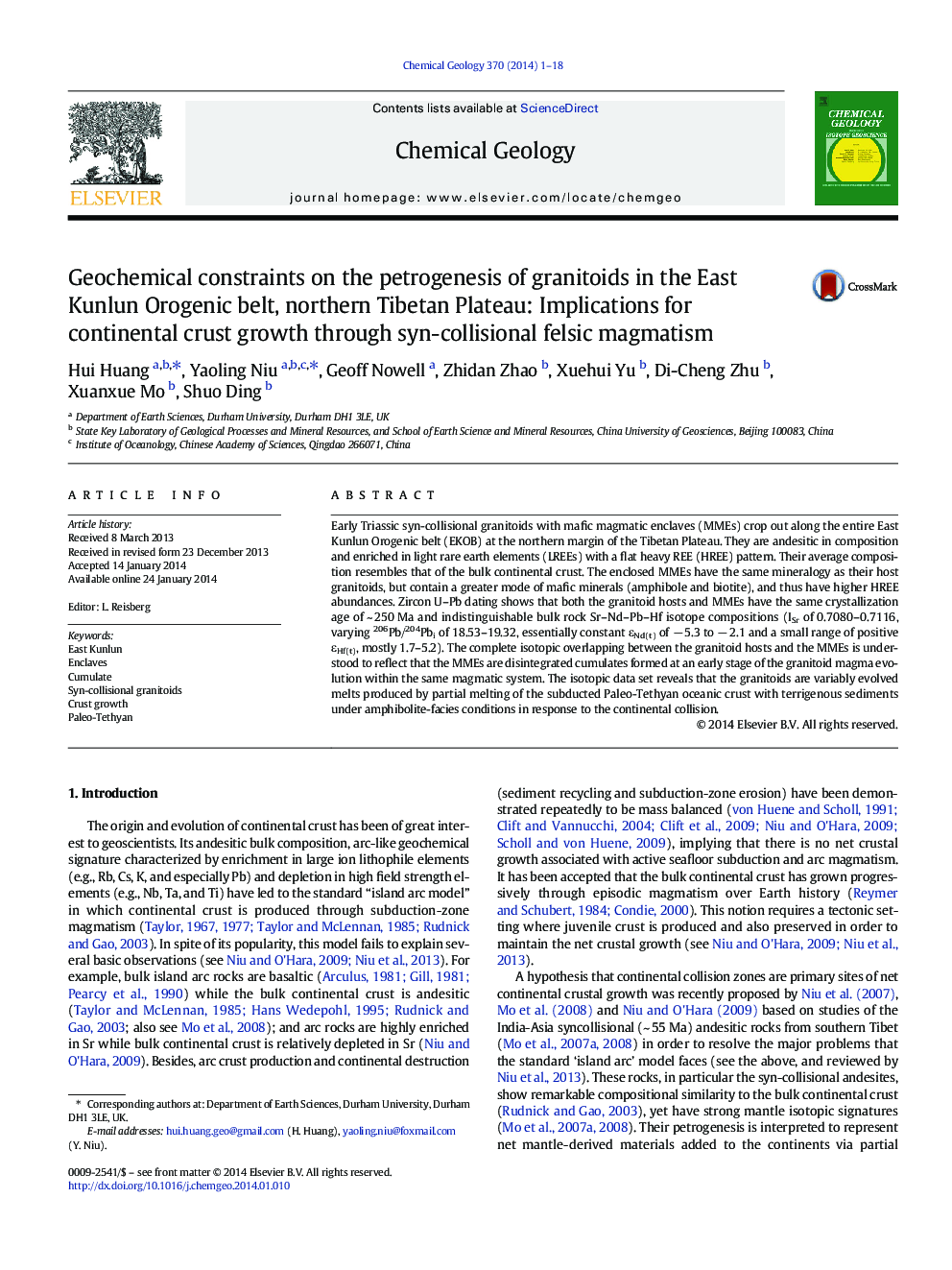| Article ID | Journal | Published Year | Pages | File Type |
|---|---|---|---|---|
| 4698779 | Chemical Geology | 2014 | 18 Pages |
•Granitoids and the mafic magmatic enclaves (MMEs) have the same mineralogy and indistinguishable overlapping isotopes.•MMEs are cumulates formed at an early stage of the granitoid magma evolution within the same magmatic system.•Syn-collisional felsic magmatism at ~ 250 Ma•Continental growth preserved in the collision zone
Early Triassic syn-collisional granitoids with mafic magmatic enclaves (MMEs) crop out along the entire East Kunlun Orogenic belt (EKOB) at the northern margin of the Tibetan Plateau. They are andesitic in composition and enriched in light rare earth elements (LREEs) with a flat heavy REE (HREE) pattern. Their average composition resembles that of the bulk continental crust. The enclosed MMEs have the same mineralogy as their host granitoids, but contain a greater mode of mafic minerals (amphibole and biotite), and thus have higher HREE abundances. Zircon U–Pb dating shows that both the granitoid hosts and MMEs have the same crystallization age of ~ 250 Ma and indistinguishable bulk rock Sr–Nd–Pb–Hf isotope compositions (ISr of 0.7080–0.7116, varying 206Pb/204Pbi of 18.53–19.32, essentially constant εNd(t) of − 5.3 to − 2.1 and a small range of positive εHf(t), mostly 1.7–5.2). The complete isotopic overlapping between the granitoid hosts and the MMEs is understood to reflect that the MMEs are disintegrated cumulates formed at an early stage of the granitoid magma evolution within the same magmatic system. The isotopic data set reveals that the granitoids are variably evolved melts produced by partial melting of the subducted Paleo-Tethyan oceanic crust with terrigenous sediments under amphibolite-facies conditions in response to the continental collision.
